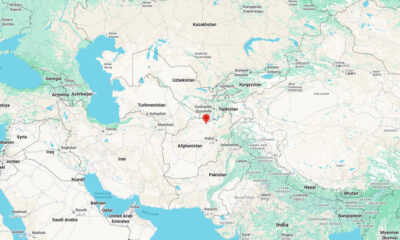Reviews
The Role of Exercise in Maternal Health: Staying Active Before and After Pregnancy

Exercise plays a crucial role in maintaining maternal health before, during, and after pregnancy. Staying active helps women build strength, improve endurance, and better prepare their bodies for the physical demands of pregnancy and childbirth. Regular physical activity reduces pregnancy discomforts like back pain, bloating, and fatigue while promoting faster postpartum recovery. However, it’s essential to approach exercise with care, understanding the body’s changing needs at each stage. From prenatal yoga to postpartum strength training, tailored exercises can make a significant difference. This article explores how exercise supports maternal health, provides actionable advice for each phase, and highlights key benefits for mothers who prioritize fitness throughout their motherhood journey.
1. Preparing Your Body for Pregnancy Through Exercise
Physical preparation before pregnancy significantly impacts maternal health outcomes. Building a strong core, improving flexibility, and enhancing cardiovascular fitness can help the body better adapt to pregnancy changes. Regular exercises like walking, swimming, or light strength training improve circulation, reduce inflammation, and support hormonal balance. Women who maintain an active lifestyle before conceiving often experience fewer complications during pregnancy and shorter labor durations. Additionally, a fit body can better manage pregnancy weight gain and physical discomforts. Experts recommend starting a consistent exercise routine at least six months before trying to conceive. Focusing on low-impact activities ensures long-term benefits while reducing the risk of injuries during pregnancy.
2. Safe Exercise Practices During Pregnancy
Staying active during pregnancy requires a thoughtful approach to ensure both maternal and fetal safety. Exercises such as prenatal yoga, swimming, and light resistance training help maintain muscle tone, boost energy levels, and support joint stability. Listening to your body is crucial; discomfort, dizziness, or shortness of breath are signals to stop and reassess. As pregnancy progresses, exercises should adapt to accommodate the growing belly and shifting center of gravity. While many women worry about physical changes, staying active can minimize discomfort and delay visible signs of aging after motherhood, such as reduced skin elasticity and muscle loss. Consulting a healthcare provider before starting any exercise routine ensures a safe and effective approach tailored to individual needs.
3. Postpartum Recovery: Easing Back into Fitness
The postpartum period is a critical phase for maternal health, and exercise plays an essential role in recovery. After childbirth, the body requires time to heal, but gentle movements can promote circulation, reduce swelling, and prevent postpartum complications. Initially, light activities like walking and pelvic floor exercises help rebuild strength without straining the body. Over time, mothers can gradually introduce more structured exercises, focusing on core stabilization and overall muscle recovery. Patience is key during this stage, as the body may take weeks or even months to regain pre-pregnancy strength. Prioritizing rest alongside consistent, low-impact exercise supports a smoother recovery process.
For mothers experiencing vein-related concerns such as varicose veins or poor circulation following childbirth, seeking professional care from a Stamford vein clinic, which specializes in vein treatment, can play a vital role in the recovery journey. These clinics offer targeted therapies to alleviate discomfort, reduce swelling, and improve blood flow, which complements the benefits of postpartum exercise and helps prevent long-term complications associated with vascular issues.
4. Strengthening Core Muscles for Long-Term Benefits
Core strength is a cornerstone of maternal health, both during and after pregnancy. The abdominal muscles, lower back, and pelvic floor experience significant strain during pregnancy and childbirth. Weak core muscles can lead to issues like poor posture, back pain, and pelvic floor dysfunction. Exercises such as pelvic tilts, gentle crunches, and bird-dog poses help rebuild core strength gradually. These exercises should be performed with proper form to avoid injuries and maximize effectiveness. Women who focus on core rehabilitation often experience improved posture, reduced back pain, and better support for daily physical activities. Building core strength is not just about aesthetics but about creating a foundation for overall well-being.
5. Cardiovascular Health and Stamina During Motherhood
Cardiovascular health is vital for mothers, especially given the physical demands of pregnancy, childbirth, and parenting. Aerobic exercises such as brisk walking, cycling, or swimming improve heart health, increase lung capacity, and boost overall stamina. Enhanced cardiovascular fitness helps mothers cope with fatigue, which is common in the postpartum period. Regular aerobic activity also supports better sleep patterns, improved metabolism, and balanced hormone levels. Mothers who maintain good cardiovascular health are better equipped to handle the physical demands of childcare, from carrying toddlers to managing daily responsibilities. Even 20–30 minutes of light aerobic exercise a few times a week can yield significant health benefits.
6. The Role of Strength Training in Maternal Health
Strength training is often overlooked in maternal fitness routines, but it plays a crucial role in supporting overall health during and after pregnancy. Building and maintaining muscle mass helps mothers manage the physical strain of carrying a growing baby, lifting heavy strollers, and performing other daily tasks. Exercises such as squats, lunges, and resistance band workouts strengthen major muscle groups, improve posture, and reduce back pain. Postpartum, strength training can help rebuild muscles weakened by pregnancy and childbirth. Consistency is key, with a focus on proper form to avoid injury. Even simple bodyweight exercises can provide significant benefits for long-term maternal strength and resilience.
7. Flexibility and Mobility: Reducing Physical Discomfort
Flexibility and mobility exercises are essential for easing common physical discomforts associated with pregnancy and postpartum recovery. Stretching routines help alleviate tightness in the hips, lower back, and shoulders, areas that often carry significant strain during motherhood. Mobility exercises improve joint function and reduce the risk of injury from repetitive daily movements. Activities like prenatal yoga, gentle stretching, and foam rolling are excellent ways to maintain flexibility. After childbirth, these practices also aid in recovery by reducing muscle tension and improving circulation. Prioritizing flexibility helps mothers move more comfortably and prevents long-term issues like poor posture or chronic pain.
Exercise plays an indispensable role in maternal health, offering physical benefits that extend far beyond pregnancy and childbirth. From improved strength and cardiovascular health to reduced discomfort and faster recovery, staying active supports every stage of motherhood. Tailoring fitness routines to the unique needs of each phase—prenatal, postpartum, and beyond—ensures safety and effectiveness. However, it’s equally important to listen to your body, prioritize rest, and seek professional guidance when needed. With a balanced approach to exercise, mothers can enjoy a healthier, more energetic, and fulfilling motherhood journey while laying the foundation for long-term well-being.

-

 US News5 days ago
US News5 days agoJetBlue flight diverts to Tampa after altitude drop injures at least 15
-

 World1 week ago
World1 week agoU.S. Navy helicopter and fighter jet crash in South China Sea; all crew rescued
-

 Legal1 week ago
Legal1 week agoMultiple injured in shooting at Lincoln University in Pennsylvania
-

 World2 days ago
World2 days agoStrong 6.3 earthquake strikes northern Afghanistan; felt across Pakistan
-

 World3 days ago
World3 days ago10 people stabbed on train in Huntingdon, England
-

 World2 days ago
World2 days agoProtesters storm government building in Mexico after killing of local mayor
-

 US News5 days ago
US News5 days agoTrump says U.S. will resume nuclear weapons testing ‘on an equal basis’
-

 US News7 days ago
US News7 days agoDamage reported in Kilgore, Texas following tornado warning




